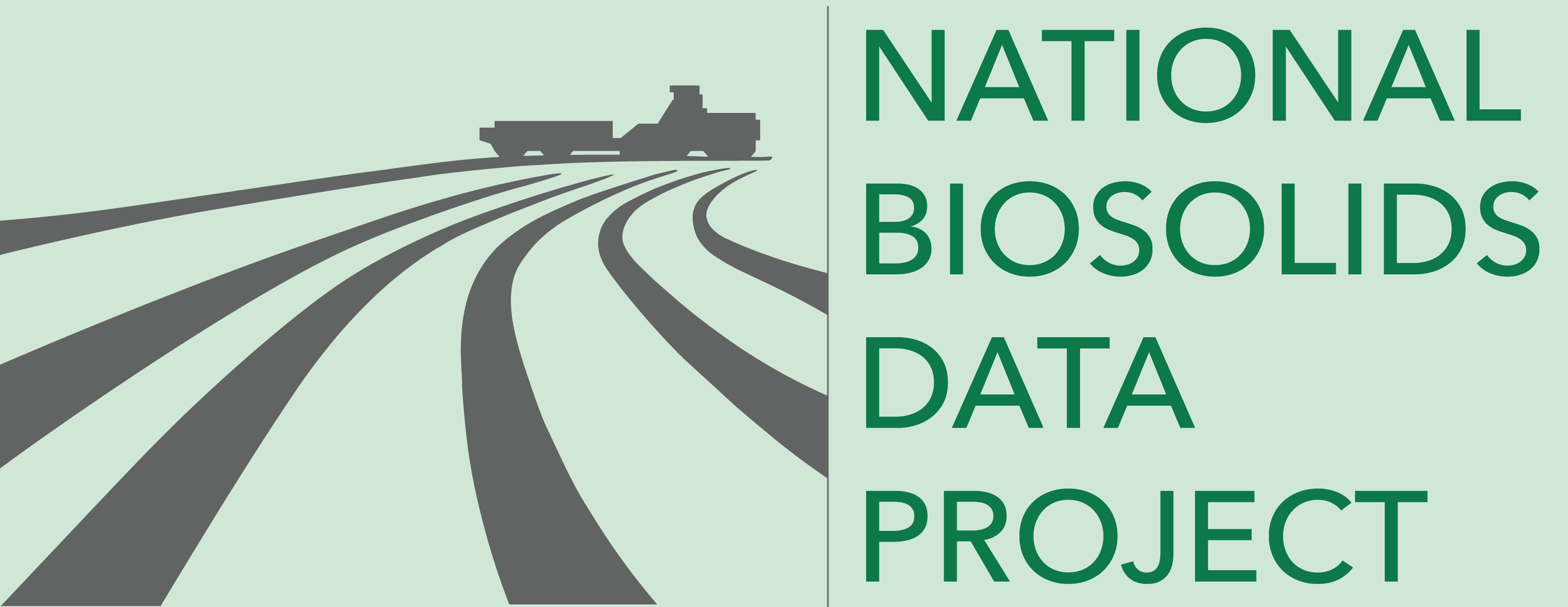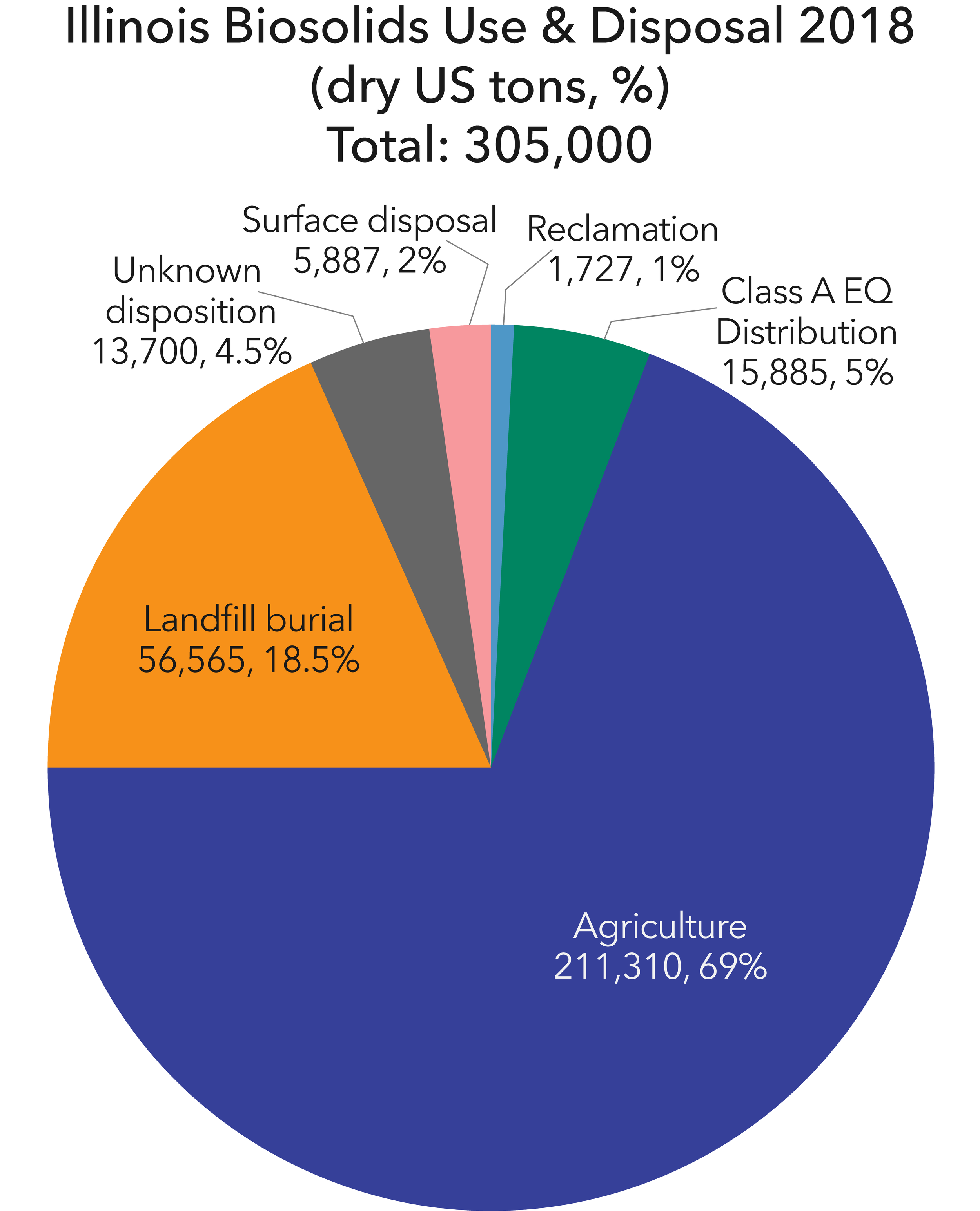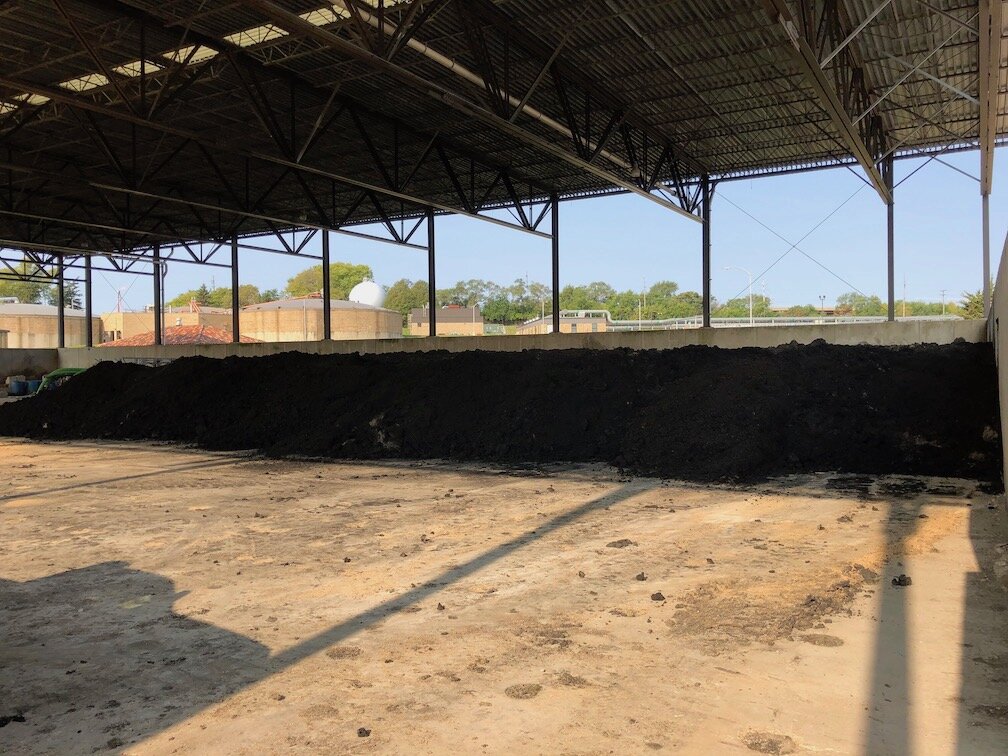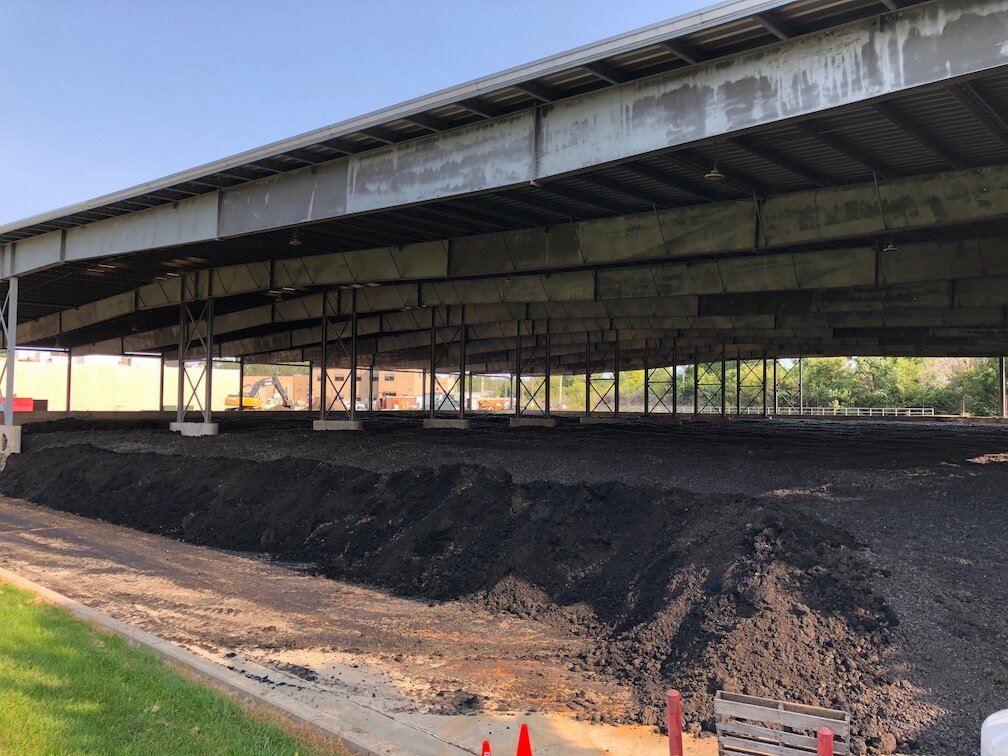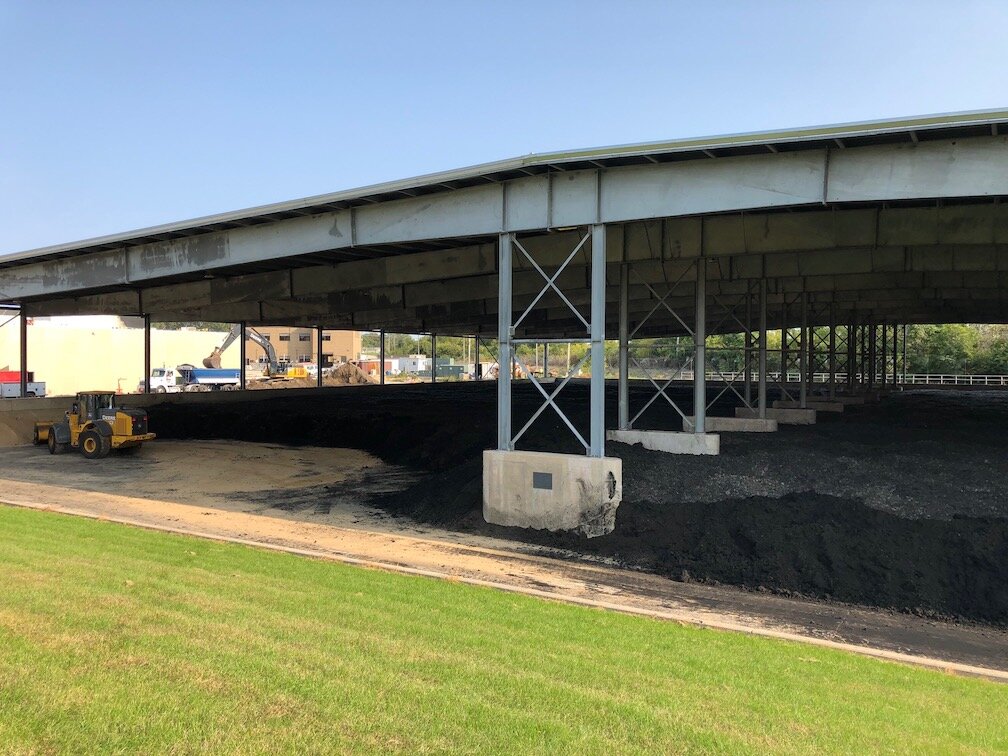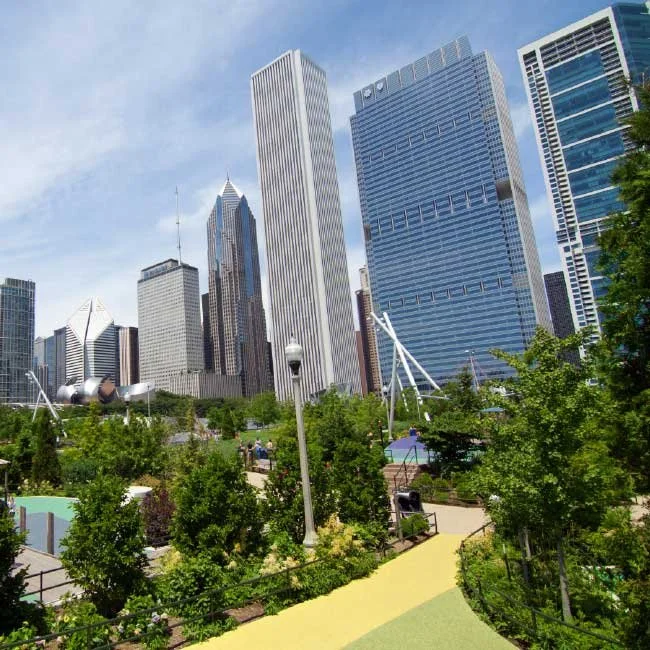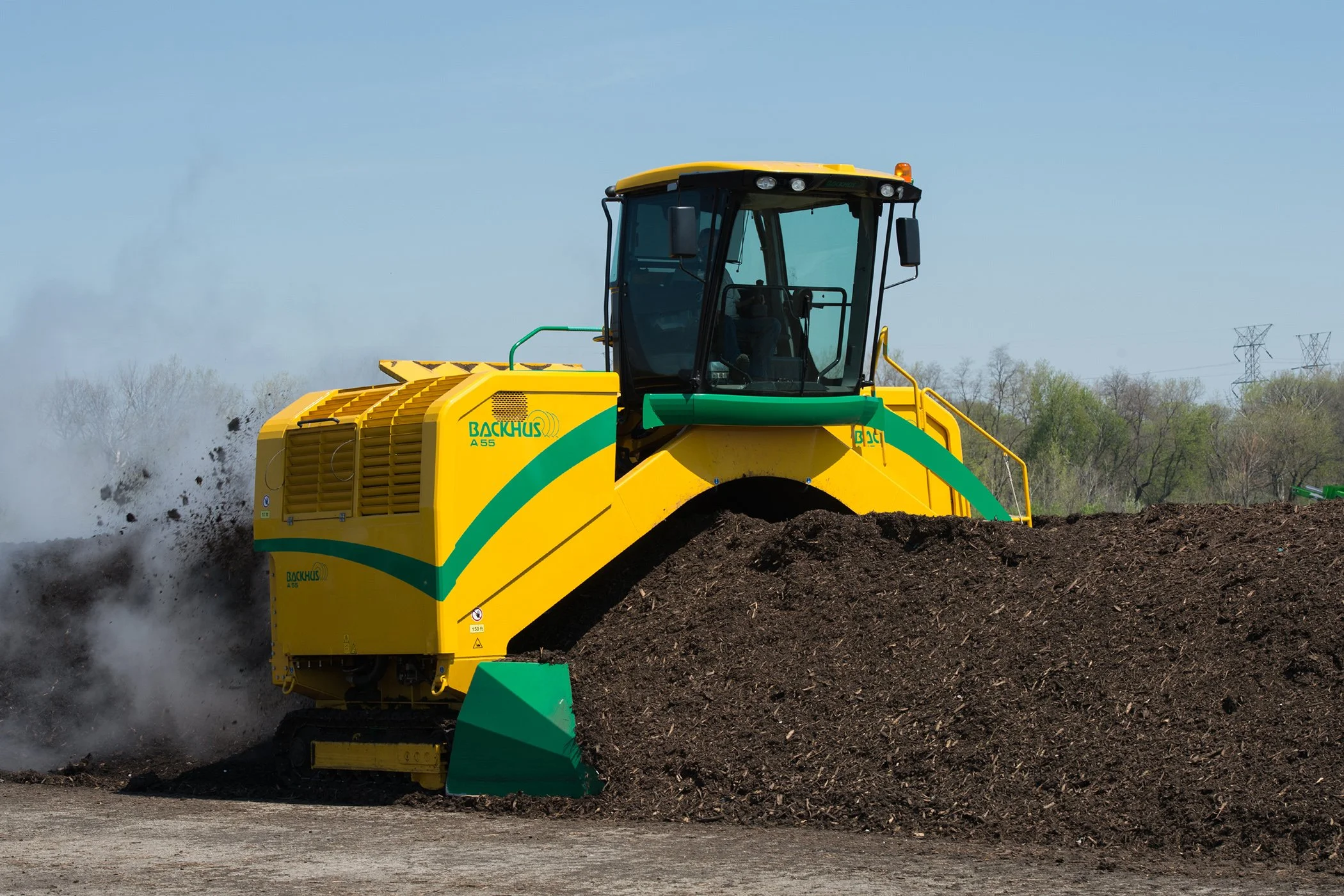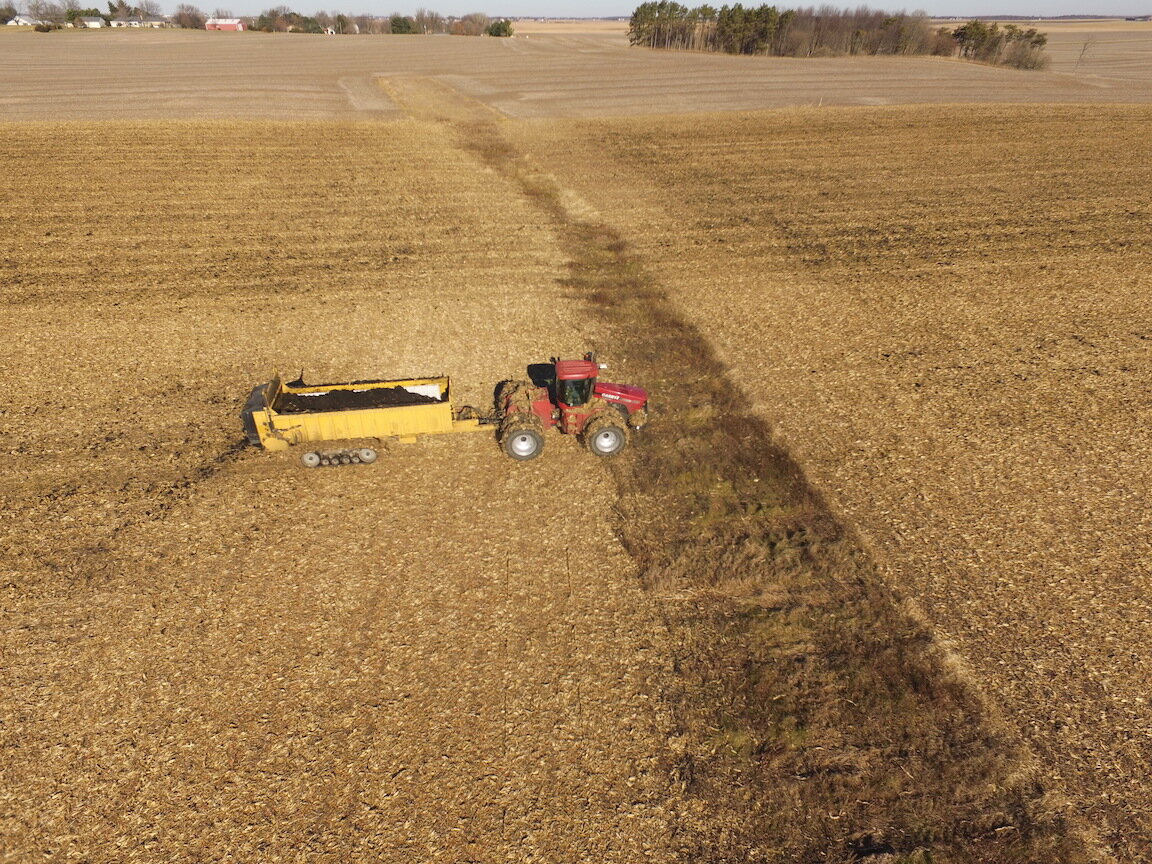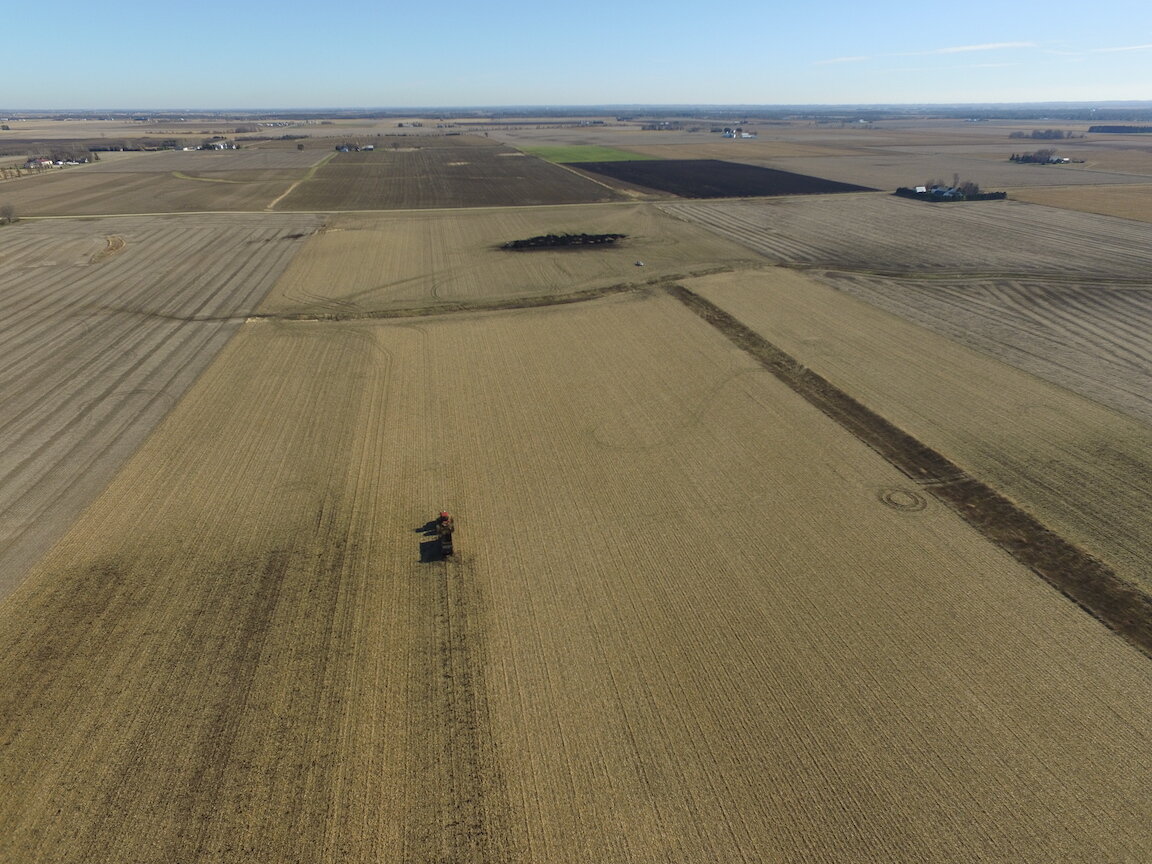State Data
Confidence in data for this state:
MODERATE
2018 data unless noted.
Definitions
Terms used on this website and in data sets are defined & discussed here.
Biosolids curing in storage at the Fox Metro WRD. Photos courtesy of Fox Metro WRD.
Biosolids land application. Photo courtesy of Fox Metro Water Reclamation District.
State Statistics Dashboard
State Summary
● An estimated 75% of Illinois wastewater solids are applied to soils, and about 20% are placed in landfills or surface disposal sites.
● Agricultural land is abundant and close to a large number of water resource recovery facilities (WRRFs), allowing for many programs to cost-effectively inject liquid Class B biosolids in farm soils. Still, most biosolids are land applied as dewatered cake.
● Chicago dominates solids production and management in the state, including demonstrating and leading diverse biosolids management options: Class B land application for agriculture and long-term drying, composting, and pelletization to produce various Class A products for urban and suburban uses.
Green spaces in Chicago fertilized with MWRDGC Class A EQ biosolids. Photo courtesy of MWRDGC.
Biosolids compost windrow turning. Photo courtesy of MWRDGC.
Biosolids land application by Fox Metro WRD. Photos courtesy of Fox Metro WRD.
